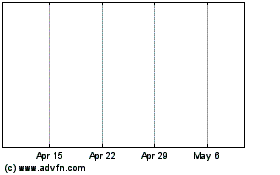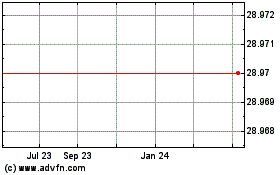Australia's Gas Industry Needs to Collaborate to Stay Ahead
27 May 2019 - 1:02PM
Dow Jones News
By Robb M. Stewart
MELBOURNE, Australia--Australia's gas-export industry benefits
from its proximity to energy-hungry Asian markets but its advantage
could be dulled if it doesn't increase collaboration and consider
sharing infrastructure and technology, an executive at Chevron
Corp. (CVX) cautioned.
Although liquefied natural gas exports have boomed in recent
years after the construction of billion-dollar production
operations around Australia, Nigel Hearne, president of
Asia-Pacific exploration and production at Chevron, said there was
too much investment and very little shared infrastructure. There is
also a shortfall of affordable and reliable domestic gas supply in
the country, he said.
"We have to break the paradigm so we're not competing
in-country," Mr. Hearne said in an interview with The Wall Street
Journal. "We're competing with other countries that are after the
same markets that Australia is, such as Qatar and Russia and North
America."
Growing demand for energy and cleaner-burning fuels such as
natural gas are expected to keep Asia at the heart of the LNG
industry's growth. Yet gas from rivals basins in the U.S. and
elsewhere are getting more efficient and lowering costs,
heightening competition with Australian fuel.
Mr. Hearne said that unlike in Australia, the North American
natural gas system is interconnected and cargoes of LNG are already
moving from the Gulf Coast to Asia, and there is likely be a time
when gas from Appalachian shale also finds its way to Asia.
Australia has significant resources and companies have sunk
significant investment in the infrastructure that cools gas to a
liquid so it can be shipped, but the country needs to ensure costs
remain low and the price of LNG that lands in Asia remains
competitive.
"We've not yet demonstrated the ability to collaborate as we
should have, and I think if we focus on competing outside of
Australia it really will be the collaborating that will create an
interconnected basin that will lower our development costs," Mr.
Hearne said.
He pointed to the North Sea and Gulf of Mexico as examples of
where industry has successfully shared infrastructure, helping oil
fields develop and ensure facilities work at capacity and costs are
held down. He added the time for an interconnected basin in
Australia, rather than separate LNG and domestic gas industries, is
now ahead of the next wave of expected investment in LNG. "We
haven't done it to date, but there's no reason why this should stop
us," he said.
Mr. Hearne welcomed proposals by several companies to build LNG
import facilities in eastern Australia to add volumes of domestic
gas and shore up the local power industry, and suggested that
Australian LNG operations approach the liquefaction of natural gas
as a service rather than bespoke capital investments that could
strand resources.
"I think things will naturally evolve," Mr. Hearne said, adding
Australia can maintain its advantage over other exporters if it can
keep existing LNG infrastructure full. That begins by looking at
the market rather than the sources of production, working together
and considering an integrated gas system in Australia.
Write to Robb M. Stewart at robb.stewart@wsj.com
(END) Dow Jones Newswires
May 26, 2019 22:47 ET (02:47 GMT)
Copyright (c) 2019 Dow Jones & Company, Inc.
Woodside Petroleum (ASX:WPL)
Historical Stock Chart
From Dec 2024 to Jan 2025

Woodside Petroleum (ASX:WPL)
Historical Stock Chart
From Jan 2024 to Jan 2025
